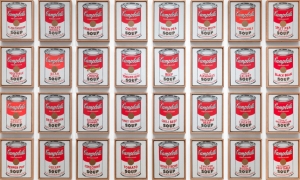Youtube – “I Think I Like To Spend Money”
First Version:
“I Think I Like to Spend Money”
Money
Money
Money
Bagel, yogurt, and coffee
Spend
Spend
Spend
Nutrition, energy, and consciousness
Money
Money
Money
Coat, scarf, and shoes
Spend
Spend
Spend
Warmness, beauty, and comfort
Money
Money
Money
Metro, Path and bus ticket
Spend
Spend
Spend
Speed, convenience, and cleanness
Money
Money
Spend
Spend
Give and then consume
Devote and then satisfied
Money
Money
Spend
Spend
Earn and then buy
Work and then relax
Money
Money
Spend
Spend
Suffered and then fulfilled
Die and then revive
So
I think I like to spend money
Second Version modified by Lu
 Repetition still works!
Repetition still works!
Although money is not the non-sentient living thing actually, money does grow (hopefully).
Poetry Assumptions
Biases:
- That a poem is to be read for its “message,”
- That this message is “hidden” in the poem,
- The message is to be found by treating the words as symbols which naturally do not mean what they say but stand for something else,
- You have to decipher every single word to appreciate and enjoy the poem.
Form
A poem may or may not have a specific number of lines, rhyme scheme and/or metrical pattern, but it can still be labeled according to its form or style. Here are the three most common types of poemsaccording to form:
- Lyric Poetry: It is any poem with one speaker (not necessarily the poet) who expresses strong thoughts and feelings. Most poems, especially modern ones, are lyric poems.
ex: Ode(頌詩), elegy(輓歌悼文) and sonnet(十四行詩). - Narrative Poem: It is a poem that tells a story; its structure resembles the plot line of a story [i.e. the introduction of conflict and characters, rising action, climax and the denouement. ex: ballad(民謠情歌) and epic(傳說史詩).
- Descriptive Poem: It is a poem that describes the world that surrounds the speaker. It uses elaborate imagery and adjectives. While emotional, it is more “outward-focused” than lyric poetry, which is more personal and introspective.
Stanza
Stanza: Stanzas are a series of lines grouped together and separated by an empty line from other stanzas. They are the equivalent of a paragraph in an essay. One way to identify a stanza is to count the number of lines. Thus:
- couplet (2 lines)
- tercet (3 lines)
- quatrain (4 lines)
- cinquain (5 lines)
- sestet (6 lines) (sometimes it’s called a sexain)
- septet (7 lines)
- octave (8 lines)
Rhyme(押韻) Scheme
Rhyme is the repetition of similar sounds. In poetry, the most common kind of rhyme is the end rhyme, which occurs at the end of two or more lines. It is usually identified with lower case letters, and a new letter is used to identify each new end sound. Take a look at the rhyme scheme for the following poem :
I saw a fairy in the wood,
He was dressed all in green.
He drew his sword while I just stood,
And realized I’d been seen.
Rhythm(節奏) and Meter
Meter is the systematic regularity in rhythm; this systematic rhythm (or sound pattern) is usually identified by examining the type of “foot” and thenumber of feet.
Speaker and Tone
If there is a persona who is speaking the lines of a poem, this must be noted. Similarly, note whether the poem is written sincerely, or spoken with an ironic tone.
References
http://classroom.synonym.com/analysis-structure-poems-3287.html
http://learn.lexiconic.net/elementsofpoetry.htm
https://structureandsurprise.wordpress.com/pedagogy/poetic-structures-summarized/